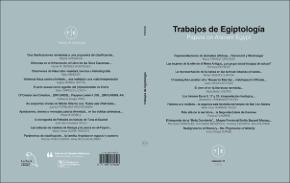Dos falsificaciones ramésidas y una propuesta de clasificación tipológica de las piezas dudosas
Author
Jaramago, MiguelDate
2020Abstract
El propósito de la presente comunicación es dar a conocer las investigaciones llevadas a cabo sobre dos piezas que se encuentran en sendas colecciones públicas madrileñas, una en el Museo Arqueológico Nacional de Madrid y otra en el Museo Cerralbo. Ambas llegaron a España en la segunda mitad del siglo XIX a través de coleccionistas privados. La primera de ellas porta un cartouche del faraón Ramsés I, la otra una forma del praenomen de Sethi I. Como tendremos ocasión de comprobar, pensamos que ninguna de ellas fue creada en el Egipto faraónico. Previamente se procederá a establecer una distinción tipológica básica de los materiales egipcios que pueden llegar a un museo (descartando los que proceden directamente de una excavación), clasificándolos en diez grupos principalmente en función de su mayor o menor grado de verosimilitud. The purpose of this paper is to publish the research carried out on two pieces housed in public collections in Madrid, Museo Arqueológico Nacional de Madrid and Museo Cerralbo respectively. The two objects came to Spain in the second half of the 19th century through private collectors. One of them carries a cartouche of the pharaoh Ramesses I, while the other displays a form of the praenomen of king Sethi I. We think that neither of them was created in ancient Egypt, but the skilled artists who made them were inspired by ancient prototypes and ultimately contributed to the diffusion of a late form of Egyptomania reserved for a small circle of 19th century high society of Madrid. At the beginning, we will try to establish a basic typological distinction of the Egyptian materials that arrive at any museum (discarding those that proceed directly from an excavation), classifying them into ten groups mainly according to their greater or lesser degree of authenticity.





